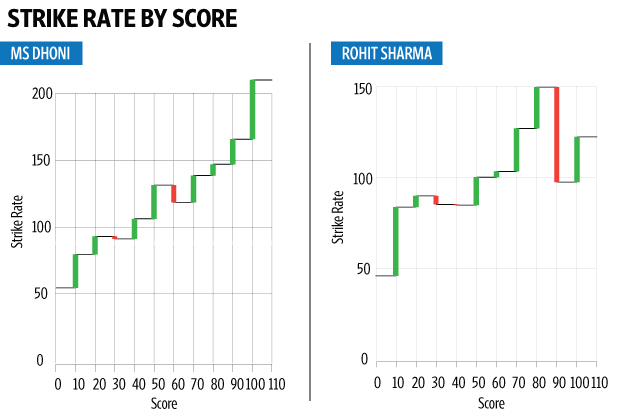This piece where Suveen Sinha of the Hindustan Times calls out Dhoni’s “joke” with respect to retirement has an interesting tailpiece:
When Dhoni was bantering with the Australian, the other journalists in the hall were laughing. They would, no sports journalist would want to be anything but nice to the formidable Indian captain. That’s why this piece had to be written by someone whose day job is to write on business and economy.
Looking at the reports of the incidents from both Sinha and EspnCricinfo’s standpoints, it is clear to me that Sinha’s view is more logical. That Dhoni’s calling of the journalist to the press conference table and cross-questioning him was unprofessional on the one hand and showed his lack of defences on the other.
Yet, the ending to Sinha’s piece also explains why other sports journalists have taken to lauding Dhoni’s view rather than critisicing him – for them, access to the Indian limited overs captain is important, and they wouldn’t like to damage that by taking an Australian colleague’s side.
The problem with a lot of sports journalism in general, and Indian cricket journalism in particular, is that jingoism and support for one’s team trumps objective reporting and analysis. One example of this was coverage from Indian and Australian newspapers of the Monkeygate scandal in 2007-08 (when Harbhajan Singh called Andrew Symonds a monkey).
More recently, there was the controversy about India losing games because of the tendency of Rohit Sharma (and Indian batsmen in general) to slow down in their 90s. Again, commentary about that took jingoistic tones, with the Indian sports media coming out strongly in favour of Sharma. There were reports defending his “commitment” and “grit” and all such flowery language sports journalists love, and that Glenn Maxwell’s comment was entirely unwarranted. Maxwell even backed down on his comments.
Data, however, showed that Maxwell need not have backed down on his comments. Some analysis based on ball-by-ball data that I published in Mint showed clearly that Indian batsmen do slow down in their 90s, and of all recent players, Sharma was the biggest culprit.


The piece was a hit and was widely shared on social media. What was more interesting, however, was the patterns in which it was shared. For one, the editors at Mint loved it and shared it widely. It was also shared widely by mango people and people with a general interest in cricket.
The class of people which was conspicuous by its absence of commentary on my piece was sports journalists. While it could be reasoned that they didn’t see the piece (appearing as it did in a business publication, though I did send emails to some of them), my reasoning is that this piece didn’t gain much traction among them because it didn’t fit their priors, and didn’t fit the jingoistic narrative they had been building.
It is not necessary, though, that someone only shares pieces that they completely agree with – it is a fairly common practice to share (and abuse) pieces which you vehemently disagree with. The commentary I found about this piece was broadly positive – few people who had shared the piece disagreed with it.
My (untested) hypothesis on this is that this analysis flew in the face of all that mainstream sports journalists had been defending over the previous few days – that Maxwell’s comments were simply not true, or that Sharma was a committed cricketer, and all such hyperbole. With data being harder to refute (only option being to poke holes in the analysis, but this analysis was rather straightforward), they chose to not give it further publicity.
Of course, I might be taking too much credit here, but that doesn’t take away from the fact that there is a problem with sports (and more specifically, cricket) writing. Oh, and as for the ultra-flowery language, I’ll save my comments for another day and another post.